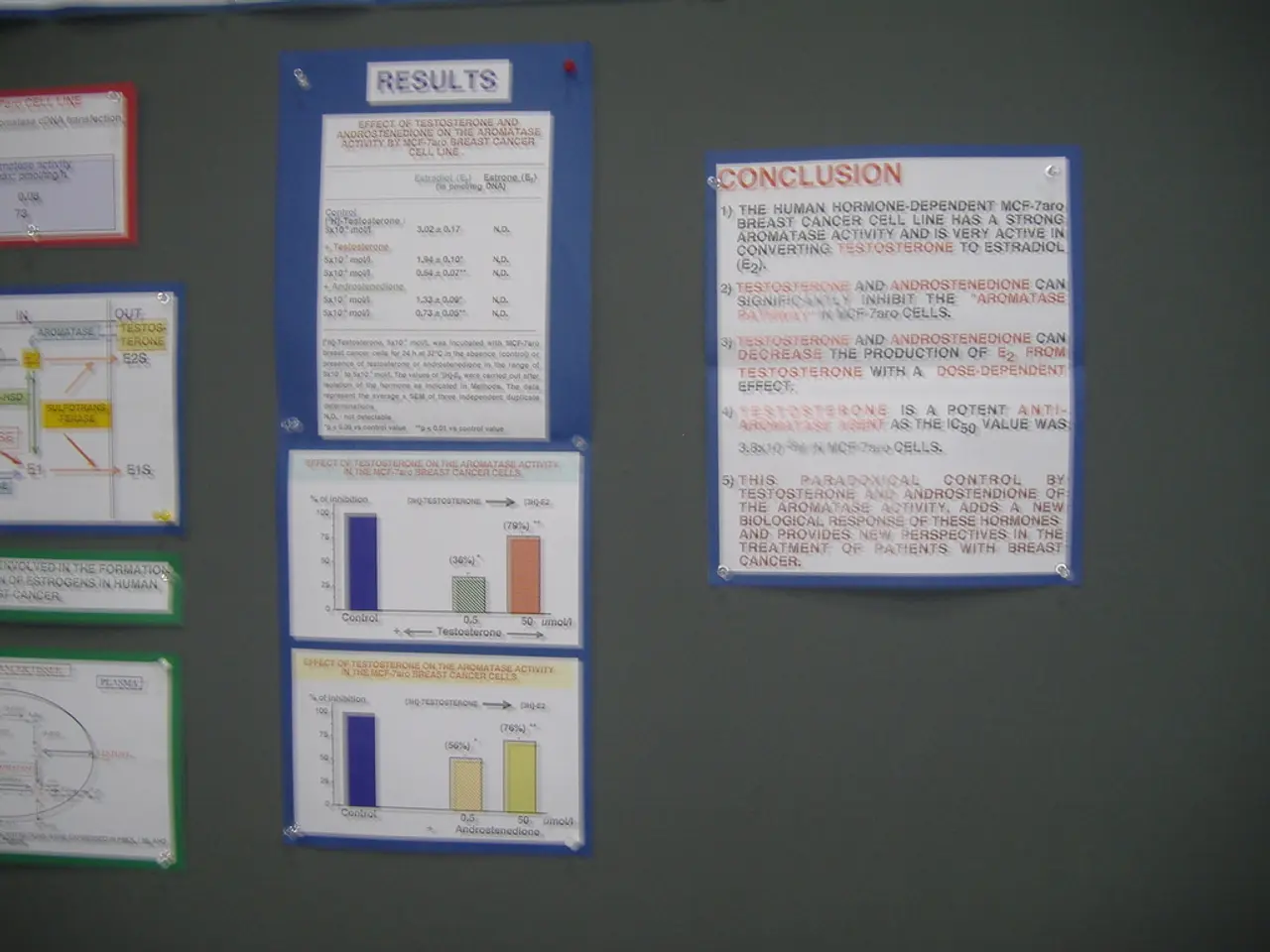Low-key credit expansion anticipated at banks as businesses opt for alternate financing channels during the low-interest rate environment, according to an SBI Report.
India's bank credit growth is experiencing a slowdown, with a year-to-date (YTD) increase of ₹2.19 lakh crore, equating to a growth of 1.2 per cent between April and July 2025 [1]. According to a report by the State Bank of India (SBI), this trend is expected to persist, with credit growth remaining low due to corporates opting for alternative funding sources in the current low-interest rate environment [2].
As of June 2025, credit growth stood at 9.5 per cent, while non-bank resource flows are growing at a much faster pace of 15.6 per cent [3]. The SBI report does not mention any government policies or interventions that may affect the trend of corporate funding, nor does it provide specific reasons for the shift towards alternative funding sources by corporates [2].
The report also highlights that the share of incremental bank credit in total resource flow is expected to fall from 31.3 per cent in FY25 to just 22 per cent by the second quarter of FY26 [4]. This indicates a significant shift away from traditional bank lending towards non-bank financial institutions (NBFIs) and other alternative funding sources.
In the same period last year, credit had grown by ₹3.79 lakh crore or 2.3 per cent YTD [5]. However, deposits grew by ₹7.45 lakh crore (3.3 per cent YTD) in the current year, slightly higher than the ₹7.01 lakh crore (3.4 per cent YTD) growth seen last year [6]. The share of savings deposits fell to 29.1 per cent in March 2025 from 30.8 per cent a year ago and 33.0 per cent two years ago [7].
The report projects that deposits will grow in the range of 12-13 per cent, while credit growth is expected to be between 10-11 per cent in FY26 [4]. It's worth noting that the report does not provide any forecast on the overall economic growth of the country based on the trend of corporate funding.
In the realm of alternative funding sources, corporates are increasingly turning to short-term corporate bonds, external commercial borrowings (ECBs), capital market instruments, and private credit markets backed by global financial institutions [2][4]. The decrease in interest rates has enhanced the appeal of bond issuances, especially short-term bonds, which allow companies to avoid locking in current rates given the anticipation of further rate cuts [4].
Moreover, fintech-digital lending platforms and NBFCs are emerging as significant credit providers, contributing further to this diversification away from traditional bank borrowing [2].
The report did not mention any impact of the trend of corporate funding on the credit growth by Scheduled Commercial Banks (SCBs). As of July 11, 2025, the credit growth by SCBs slowed to 9.8 per cent, compared to a robust 14.0 per cent growth in the same period last year [8].
In conclusion, the low bank credit growth in India is driven by regulatory and structural banking sector constraints and changing household savings behavior, while corporates prefer alternative funding such as corporate bonds, private credit, ECBs, and non-bank sources to capitalize on current low rates and flexible financial products [1][2][4]. The report did not provide any information about government policies or interventions that may affect the trend of corporate funding.
[1] Business Standard. (2025, July 20). Bank credit growth slows to 1.2% YTD. Retrieved from [https://www.business-standard.com/article/economy-policy/bank-credit-growth-slows-to-1-2-ytd-121072000644_1.html]
[2] Livemint. (2025, July 15). SBI cuts FY26 bank credit growth forecast to 10-11%. Retrieved from [https://www.livemint.com/news/india/sbi-cuts-fy26-bank-credit-growth-forecast-to-10-11-11626305129496.html]
[3] Reserve Bank of India. (2025, July 30). Trend and Progress of Bank Lending. Retrieved from [https://www.rbi.org.in/scripts/AnnualPublications.aspx?head=Trend%20and%20Progress%20of%20Bank%20Lending]
[4] Mint. (2025, July 16). Why corporates are turning to bond markets in India. Retrieved from [https://www.livemint.com/mint-today/news/why-corporates-are-turning-to-bond-markets-in-india-11626305077629.html]
[5] Business Standard. (2024, July 30). Bank credit growth slows to 2.3% YTD. Retrieved from [https://www.business-standard.com/article/economy-policy/bank-credit-growth-slows-to-2-3-ytd-121073000587_1.html]
[6] Reserve Bank of India. (2025, July 30). Trend and Progress of Bank Deposits. Retrieved from [https://www.rbi.org.in/scripts/AnnualPublications.aspx?head=Trend%20and%20Progress%20of%20Bank%20Deposits]
[7] Mint. (2025, March 31). Savings deposits fall to 29.1% of total deposits. Retrieved from [https://www.livemint.com/mint-today/news/savings-deposits-fall-to-29-1-of-total-deposits-11620845960063.html]
[8] Business Standard. (2025, July 12). Credit growth by SCBs slows to 9.8%. Retrieved from [https://www.business-standard.com/article/economy-policy/credit-growth-by-scbs-slows-to-9-8-121071200934_1.html]
- The slowdown in India's bank credit growth is encouraging corporates to explore alternative funding sources such as short-term corporate bonds, external commercial borrowings, capital market instruments, and private credit markets.
- In the current low-interest rate environment, corporates are opting for non-bank financial institutions (NBFIs) and other alternative funding sources instead of traditional bank lending, leading to a decline in the share of incremental bank credit.
- The report predicts that deposits will grow at a rate of 12-13 per cent, while credit growth is expected to be between 10-11 per cent in FY26, indicating a significant shift towards non-bank resources.
- The trend of corporate funding is driven by regulatory and structural banking sector constraints, changing household savings behavior, and the appeal of flexible and low-interest financing options offered by alternative sources.




